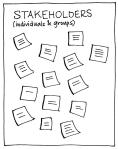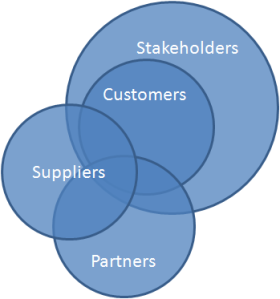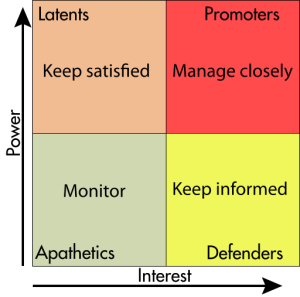 Strategic planning, as a structured and systematic process, is successful when it is leader-led and overcomes the five reasons 70% of all strategies fail. Learn how to see your plan through to success. The strategic planning process is where leaders of an organization establish the vision of the organization’s future and then develop and implement the actions necessary to achieve that future. This article expands on the strategic planning concepts addressed in Think Big, Take Small Steps and is designed to help you achieve success in your strategic planning process.
Strategic planning, as a structured and systematic process, is successful when it is leader-led and overcomes the five reasons 70% of all strategies fail. Learn how to see your plan through to success. The strategic planning process is where leaders of an organization establish the vision of the organization’s future and then develop and implement the actions necessary to achieve that future. This article expands on the strategic planning concepts addressed in Think Big, Take Small Steps and is designed to help you achieve success in your strategic planning process.
Understanding Your Company’s Readiness for Change Prepares for Strategic Planning Success.
It always amazes me that people don’t inherently understand that strategic planning equals strategic change.
If you have a “vision” then that means you are looking to go somewhere in the future that you aren’t at today. If you live in Kansas and have a vision of moving to California, do you think anything is going to change as a result of that move? Unfortunately, many executives fail to understand the magnitude of change that they are embarking on when getting into serious strategic planning–I say serious because many are not and this is the primary reason plans fail as I pointed out in The Importance of Strategic Planning.
Like many companies, we foray into changes without even considering the readiness of our organization for that change. Some of these changes are small, like moving a few executives around, creating a new product, or improving a process. Some are rather large, like mergers, organizational changes, and layoffs. However, nothing is quite like strategic change. A strategic plan is a long-term project–what I like to think of as the “forever project.” Your organization, when embarking on a serious strategic planning effort, needs to be ready for constant change forever.
Managing the change after you’ve started implementing a strategy will probably fail. At the onset of your assessment you need to assess the readiness of the organization to make the changes that will ultimately be required.
There are many Change Readiness Assessments available for free on the internet. I encourage you to look for one and apply what you think is best, but I’m going to share with you some basic questions that might help you assess without using someone’s tool (free or not).
First, do the senior executives in the organization understand and agree on the need for change? Are they happy with the status quo or do they feel that something big needs to change? Are they engaged in the direction (vision) that the organization needs to go and do they agree with it? If the leadership don’t feel that there is a need for huge change in the organization, they won’t support it. The shadow they will cast on their people will ensure heels dig in and strategic change, if possible, will take much longer than necessary. More than likely, the strategy will be abandoned the first year because you can’t get leadership traction.
Once you’ve defined the direction the organization needs to go and the executive leadership is behind it, how well do the employees understand and agree with the direction and need for change. Is it a predominate opinion across the staff that everything is fine and they are doing well? A good factor to analyze is the longevity of the employees. Long-term employees are much more resistant to change because they have a lot more invested in the organization. Strategic change usually means that people will move, organizations will change, lots of new skills will be introduced, etc. You’re not thinking about moving someone’s cheese here–you’re looking at throwing away the old moldy cheese and making new cheese–a much stronger version no less. You can always expect some resistance to change, especially in the employees, but massive resistance will cripple your effort. Understand it up front.
Before you really sit down and consider the strategy going forward, think about how things on a high-level need to change. Your organizational assessment should show you this, even though you haven’t formalized anything. Consider what potential knowledge, skills, and abilities will be required of your leaders and employees. Then assess if your leaders and employees have these things. For instance, let’s say that the consensus is, based on what you’re seeing in the organizational assessment, that your company needs to consider outsourcing several non-core functions to focus on core activities and the core activities need to be more process-focused activities. The overall plan would be to redirect non-core employees to the core activities as you outsource so employee strength remains the same, but capacity increases and you envision obtaining industry expertise at a reduced cost through a managed services model. Do the employees left behind to oversee the managed service have the current capabilities to perform this partnership management role? Do the non-core employees need to learn new core capability skills to be able to operate? If everyone is going to be process-focused, do you have a small team of expert practitioners and is there appropriate process-related knowledge, skills, and abilities at all levels of the organization?
The last major point of this type of assessment is if the organization has any current way to effectively recognize and reinforce successful change? It is important to leverage these opportunities throughout a change effort and if they don’t exist, then they need to be created. Positive reinforcement of successes and dealing effectively with resistance (negative reinforcement) are key to the long term success of strategic change.
Having a plan isn’t enough–being able to implement that plan is where the strategy emerges. However, strategy means change–change like you’ve never felt before. If your organization isn’t ready for that amount and type of change, your first strategic activity might be to build the organization’s readiness for strategic change. If you ignore the organization’s current readiness, then more than likely your strategy will fail.
So, 70% of all plans fail to some level; however, by following these guidelines you can help ensure your strategic plan will be one of the 30% successes that everyone reads about.
Related Links:
1. http://www.change-management.com/tutorial-change-management-assessments.htm





